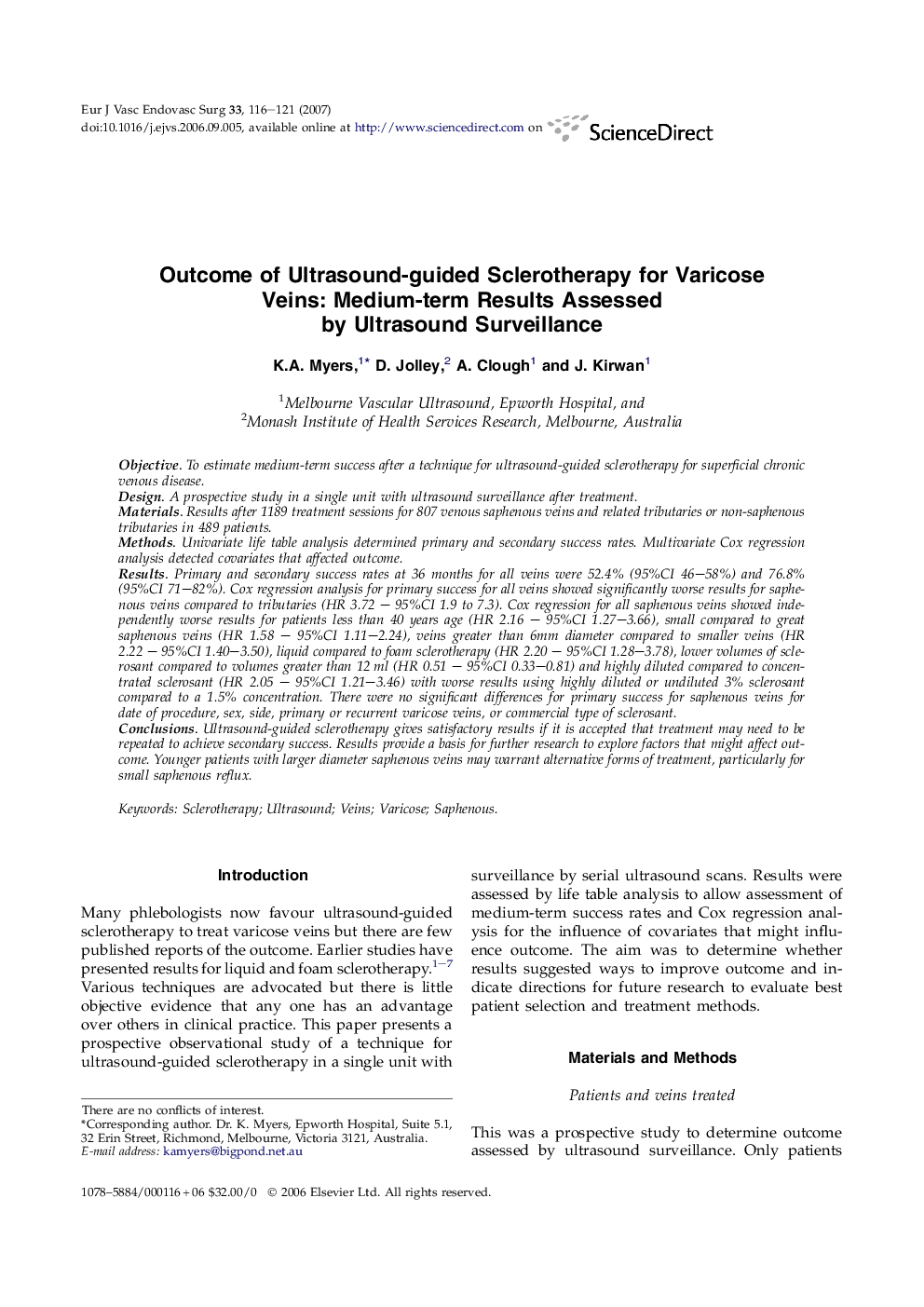| Article ID | Journal | Published Year | Pages | File Type |
|---|---|---|---|---|
| 2914690 | European Journal of Vascular and Endovascular Surgery | 2007 | 6 Pages |
ObjectiveTo estimate medium-term success after a technique for ultrasound-guided sclerotherapy for superficial chronic venous disease.DesignA prospective study in a single unit with ultrasound surveillance after treatment.MaterialsResults after 1189 treatment sessions for 807 venous saphenous veins and related tributaries or non-saphenous tributaries in 489 patients.MethodsUnivariate life table analysis determined primary and secondary success rates. Multivariate Cox regression analysis detected covariates that affected outcome.ResultsPrimary and secondary success rates at 36 months for all veins were 52.4% (95%CI 46–58%) and 76.8% (95%CI 71–82%). Cox regression analysis for primary success for all veins showed significantly worse results for saphenous veins compared to tributaries (HR 3.72 – 95%CI 1.9 to 7.3). Cox regression for all saphenous veins showed independently worse results for patients less than 40 years age (HR 2.16 – 95%CI 1.27–3.66), small compared to great saphenous veins (HR 1.58 – 95%CI 1.11–2.24), veins greater than 6mm diameter compared to smaller veins (HR 2.22 – 95%CI 1.40–3.50), liquid compared to foam sclerotherapy (HR 2.20 – 95%CI 1.28–3.78), lower volumes of sclerosant compared to volumes greater than 12 ml (HR 0.51 – 95%CI 0.33–0.81) and highly diluted compared to concentrated sclerosant (HR 2.05 – 95%CI 1.21–3.46) with worse results using highly diluted or undiluted 3% sclerosant compared to a 1.5% concentration. There were no significant differences for primary success for saphenous veins for date of procedure, sex, side, primary or recurrent varicose veins, or commercial type of sclerosant.ConclusionsUltrasound-guided sclerotherapy gives satisfactory results if it is accepted that treatment may need to be repeated to achieve secondary success. Results provide a basis for further research to explore factors that might affect outcome. Younger patients with larger diameter saphenous veins may warrant alternative forms of treatment, particularly for small saphenous reflux.
